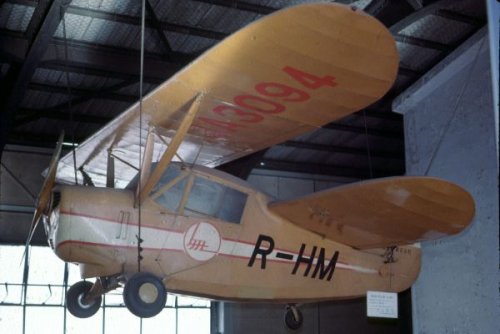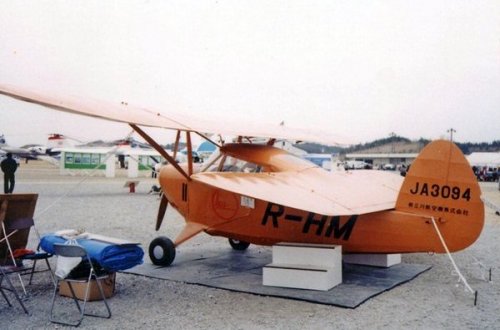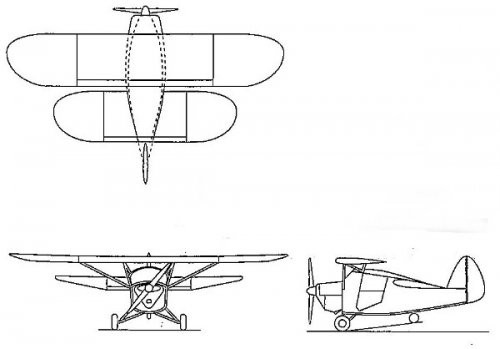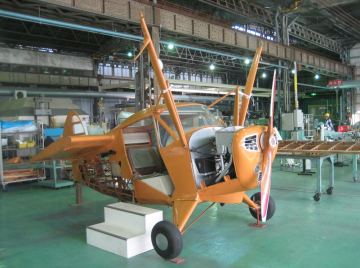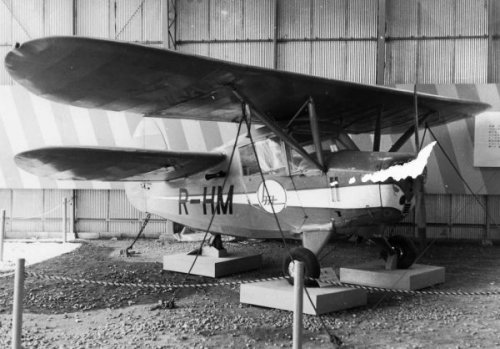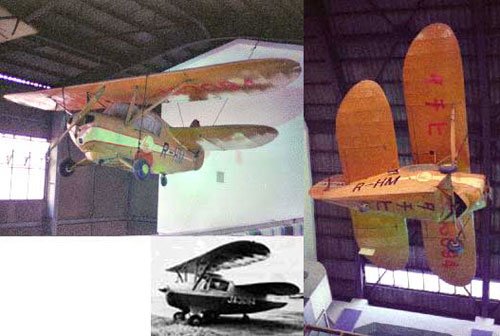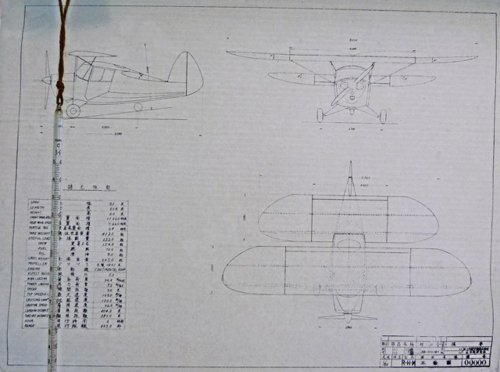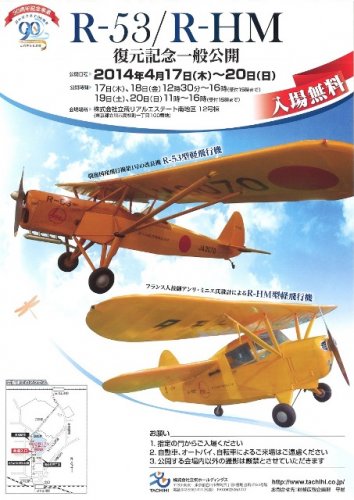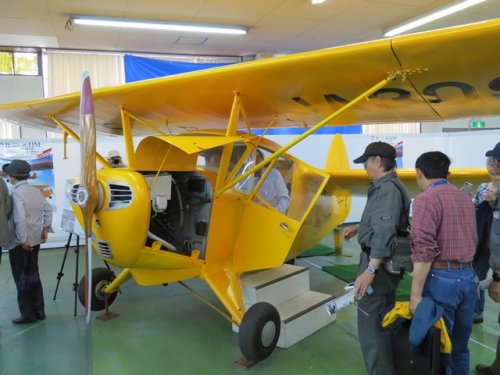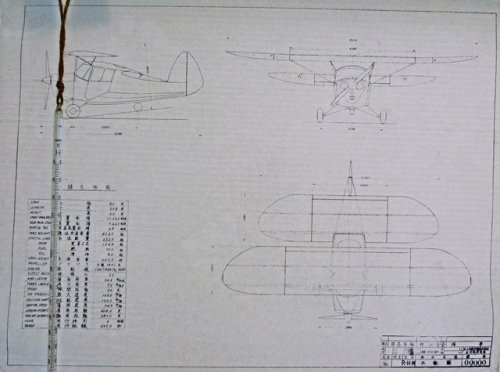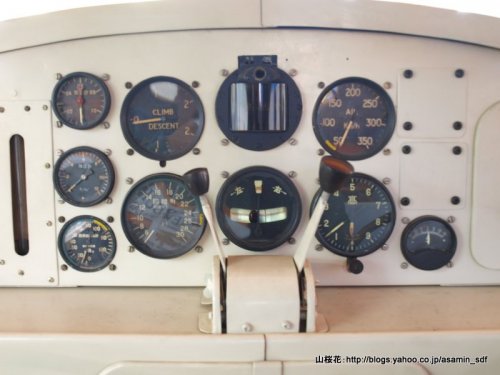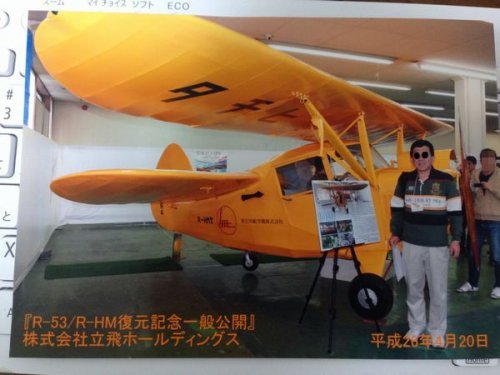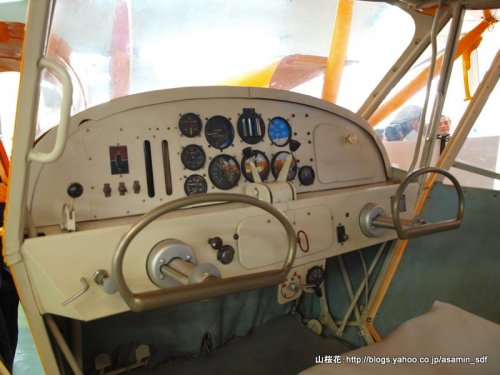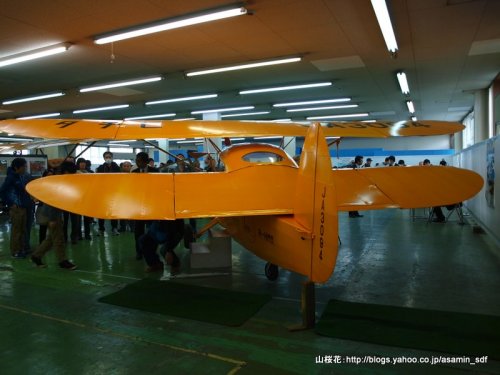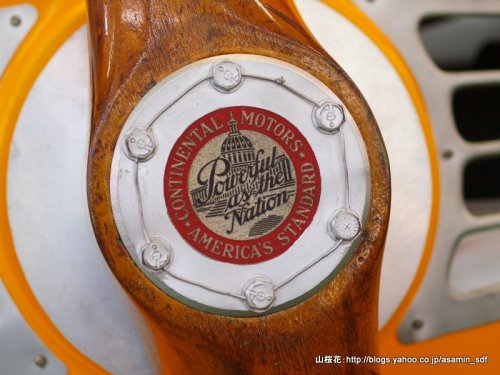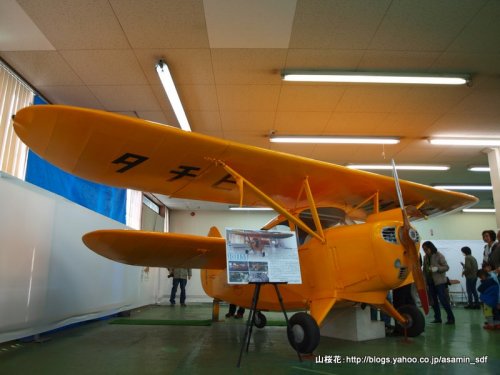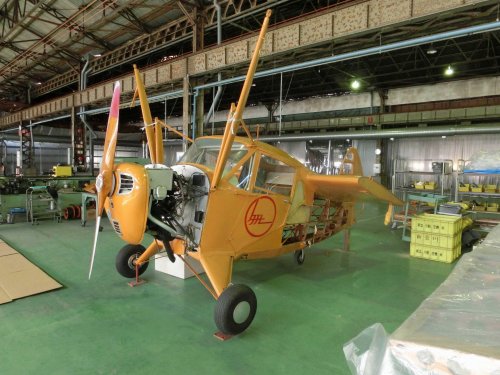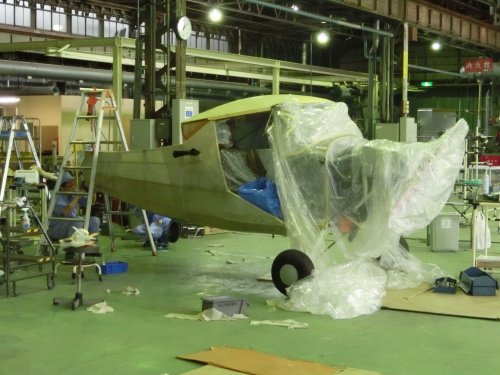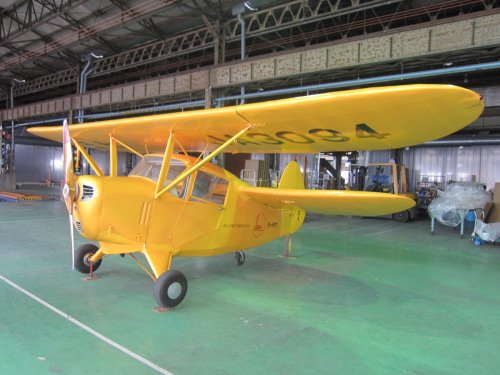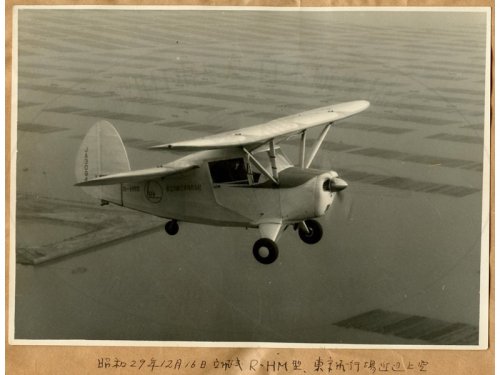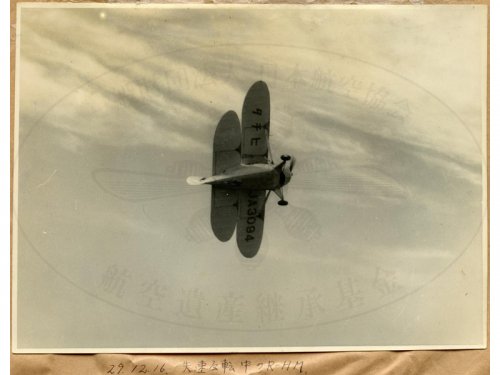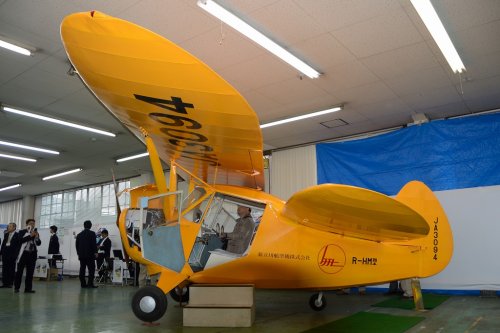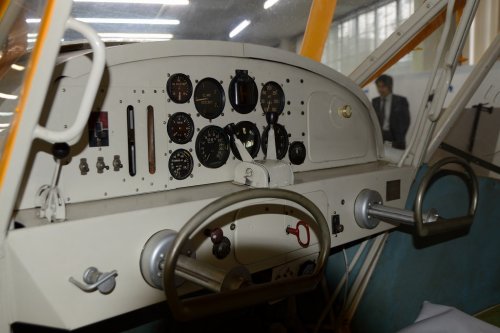- Joined
- 25 June 2009
- Messages
- 14,732
- Reaction score
- 6,073
After Japan's defeat in World War II, the manufacture of local aircraft was banned. It was only after the publication of a "Memorandum about domestic air carrier operation" issued in 1950 that development of a local civil aviation could be restarted. Then in 1952, an aviation act was promulgated, whereby aircraft manufacturing was once again made possible.
It was at that time that the leading pre-war manufacturer Tachikawa aircraft/Ishikawajima-Works was re-registered as the "New Tachikawa Aircraft Co., Ltd.", and the sign "New Tachikawa Aircraft" placated at the entrance. The new company (often found as "Tachihi") manufactured three one-off prototypes in 1953 and 1954: the R-52 (c/n 1)*, the R-53 (c/n 2)* and the R-HM (c/n 3).
The R-HM (sometimes found as RH-M in Japanese publications of that time) was based on French engineer Henri Mignet's famous HM-10 Pou du Ciel (litterally the "sky louse", or "Flying Flea" in English). A Japanese Flying Flea, the 25 hp Rifei NH-1 Hibari ("lark") had already existed back in 1935, but the special shape of the aircraft made maneuvering difficult and resulted in a crash.
After the war, Henri Mignet produced the 120 hp HM-310 Estafette in Argentina and Brazil. He also worked on the quite similar HM-330 Sakura design for Tachikawa, who designated it the R-HM. The new aircraft was completed at Koto Ward, Tokyo on December 4, 1953. It was exhibited on the ground at the 2nd Air Festival at Tsukishima airfield on September 23, 1954, a little before the first flight, which took place on October 22.
Like many postwar civilian prototypes, Japan's R-HM was a flop. Take-off and landing were complicated, and the aircraft proved difficult to fly due to stability problems. The type failed to receive a certificate of airworthiness, resulting in the production of only one machine only, and after an accident in the summer of 1955, the Aviation Administration demanded its retirement in November.
In 1974 the prototype became part of the Tokyo Transportation Museum display, but eventually disappeared and put in storage. It is currently undergoing restoration.
Population: one aircraft built (c/n 3)
Registration: September 15, 1954 [JA3094]
Cancelled: March 10, 1965
Specifications
Crew: 1 or 2 (two seats)
Engine: 90 hp Continental A90 (or 95 hp C-90-12F reciprocating?°)
Wing span: 8 m
Wing area (front wing) 7.66 m²
Wing area (rear wing): 11.06 m²
Length: 5.08 m (5.80 m°)
Height: 2 m
Propeller diameter: 1.84 m
Empty weight: 350 kg (413 kg°)
Gross weight: 660 kg (645 kg°)
Performance
Range: 700 km (640 km°)
Takeoff distance: 300 m
Landing distance: 300 m
Maximum speed 170 km/h (150 km/h°)
Cruise speed: 140 km/h
Takeoff speed: 50 km/h
Landing speed: 60 km/h
Maximum operational altitude: 3,000 m
* I'll also be writing on the R-52 and R-53 soon... — Stargazer2006
° alternate specs found in other source, probably more realistic
It was at that time that the leading pre-war manufacturer Tachikawa aircraft/Ishikawajima-Works was re-registered as the "New Tachikawa Aircraft Co., Ltd.", and the sign "New Tachikawa Aircraft" placated at the entrance. The new company (often found as "Tachihi") manufactured three one-off prototypes in 1953 and 1954: the R-52 (c/n 1)*, the R-53 (c/n 2)* and the R-HM (c/n 3).
The R-HM (sometimes found as RH-M in Japanese publications of that time) was based on French engineer Henri Mignet's famous HM-10 Pou du Ciel (litterally the "sky louse", or "Flying Flea" in English). A Japanese Flying Flea, the 25 hp Rifei NH-1 Hibari ("lark") had already existed back in 1935, but the special shape of the aircraft made maneuvering difficult and resulted in a crash.
After the war, Henri Mignet produced the 120 hp HM-310 Estafette in Argentina and Brazil. He also worked on the quite similar HM-330 Sakura design for Tachikawa, who designated it the R-HM. The new aircraft was completed at Koto Ward, Tokyo on December 4, 1953. It was exhibited on the ground at the 2nd Air Festival at Tsukishima airfield on September 23, 1954, a little before the first flight, which took place on October 22.
Like many postwar civilian prototypes, Japan's R-HM was a flop. Take-off and landing were complicated, and the aircraft proved difficult to fly due to stability problems. The type failed to receive a certificate of airworthiness, resulting in the production of only one machine only, and after an accident in the summer of 1955, the Aviation Administration demanded its retirement in November.
In 1974 the prototype became part of the Tokyo Transportation Museum display, but eventually disappeared and put in storage. It is currently undergoing restoration.
Population: one aircraft built (c/n 3)
Registration: September 15, 1954 [JA3094]
Cancelled: March 10, 1965
Specifications
Crew: 1 or 2 (two seats)
Engine: 90 hp Continental A90 (or 95 hp C-90-12F reciprocating?°)
Wing span: 8 m
Wing area (front wing) 7.66 m²
Wing area (rear wing): 11.06 m²
Length: 5.08 m (5.80 m°)
Height: 2 m
Propeller diameter: 1.84 m
Empty weight: 350 kg (413 kg°)
Gross weight: 660 kg (645 kg°)
Performance
Range: 700 km (640 km°)
Takeoff distance: 300 m
Landing distance: 300 m
Maximum speed 170 km/h (150 km/h°)
Cruise speed: 140 km/h
Takeoff speed: 50 km/h
Landing speed: 60 km/h
Maximum operational altitude: 3,000 m
* I'll also be writing on the R-52 and R-53 soon... — Stargazer2006
° alternate specs found in other source, probably more realistic
Attachments
-
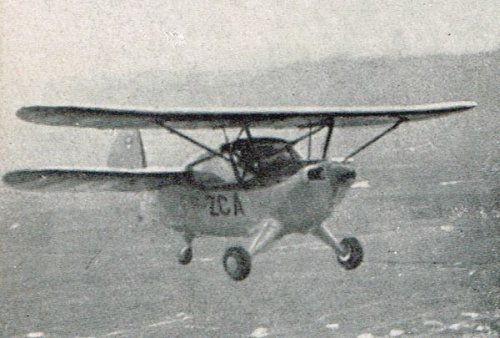 RS-0003-JA3094-Sekou195504 (1).jpg51.9 KB · Views: 796
RS-0003-JA3094-Sekou195504 (1).jpg51.9 KB · Views: 796 -
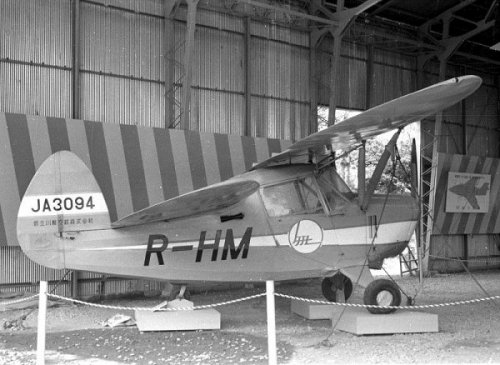 Hiroshi aviation park, Futakotamagawa, March 1963.jpg71.2 KB · Views: 47
Hiroshi aviation park, Futakotamagawa, March 1963.jpg71.2 KB · Views: 47 -
 Twinbeech Transportation Museum, 1960-08-21.jpg35.8 KB · Views: 41
Twinbeech Transportation Museum, 1960-08-21.jpg35.8 KB · Views: 41 -
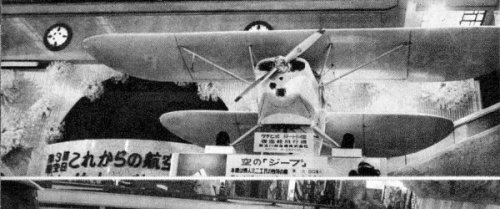 November 1955 exhibition at Mitsukoshi Department Store.jpg45.6 KB · Views: 35
November 1955 exhibition at Mitsukoshi Department Store.jpg45.6 KB · Views: 35 -
 November 1955 exhibition at Mitsukoshi Department Store (top view).jpg61.5 KB · Views: 675
November 1955 exhibition at Mitsukoshi Department Store (top view).jpg61.5 KB · Views: 675 -
 April 1955 issue of the world's aircraft.jpg93.1 KB · Views: 710
April 1955 issue of the world's aircraft.jpg93.1 KB · Views: 710 -
 Fukui Masao, Tsukishima airfield, 1954-09-23 (rear).jpg25.7 KB · Views: 731
Fukui Masao, Tsukishima airfield, 1954-09-23 (rear).jpg25.7 KB · Views: 731 -
 Fukui Masao, Tsukishima airfield, 1954-09-23.jpg28.1 KB · Views: 750
Fukui Masao, Tsukishima airfield, 1954-09-23.jpg28.1 KB · Views: 750

